 Increasingly, gardeners began to plant hydrangea in their beautifully flowering plant. By genetic origin, it is a southern shrub. Therefore, most of them need shelter for the winter. But there are species and varieties that tolerate quite severe winters and frosts down to -40 degrees. Therefore, before deciding how to shelter hydrangea for the winter in the Moscow Region, you need to determine the type and type of hydrangea.
Increasingly, gardeners began to plant hydrangea in their beautifully flowering plant. By genetic origin, it is a southern shrub. Therefore, most of them need shelter for the winter. But there are species and varieties that tolerate quite severe winters and frosts down to -40 degrees. Therefore, before deciding how to shelter hydrangea for the winter in the Moscow Region, you need to determine the type and type of hydrangea.
Content
Types of hydrangea in winter hardiness
The most adapted to winter species paniculate and tree-like. But the first years, when the bush is still young, he needs shelter. In severe winters, shoots can freeze and not bloom the next year. This is because the buds from which panicle inflorescences form are located on the top of the branch.
 [sc name = "info-hand" text = "The large-leaved and curly petiolate hydrangea hibernate much worse. Recently, breeders among these species have bred varieties that are relatively resistant to cold, but all the same, it is better to shelter them in the winter. ”]
[sc name = "info-hand" text = "The large-leaved and curly petiolate hydrangea hibernate much worse. Recently, breeders among these species have bred varieties that are relatively resistant to cold, but all the same, it is better to shelter them in the winter. ”]
The vast majority of gardeners are inclined to conclude that it is better to protect the plant from frost, so that in summer it is guaranteed to enjoy the flowering of this beautiful bush.
Moreover, he deserves such a reverent attitude. The variety of varieties with beautiful inflorescences of different shapes, colors and sizes is impressive. For example, it is difficult to take your eyes off the panicled variety Pinki Winky, with a conical bunch and a transition of color from pink to white. And the huge snow-white ball of the tree-shaped Incrediball amazes with its beauty.
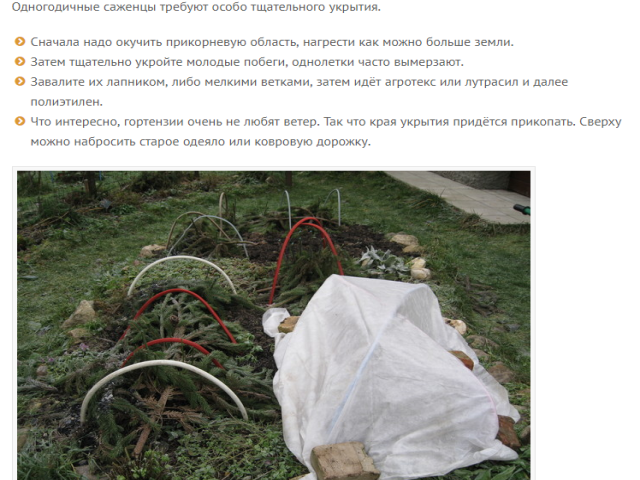
Features of the weather in the suburbs
For each region, it is desirable to choose not only the varieties most adapted to the region, but also take into account climatic features.
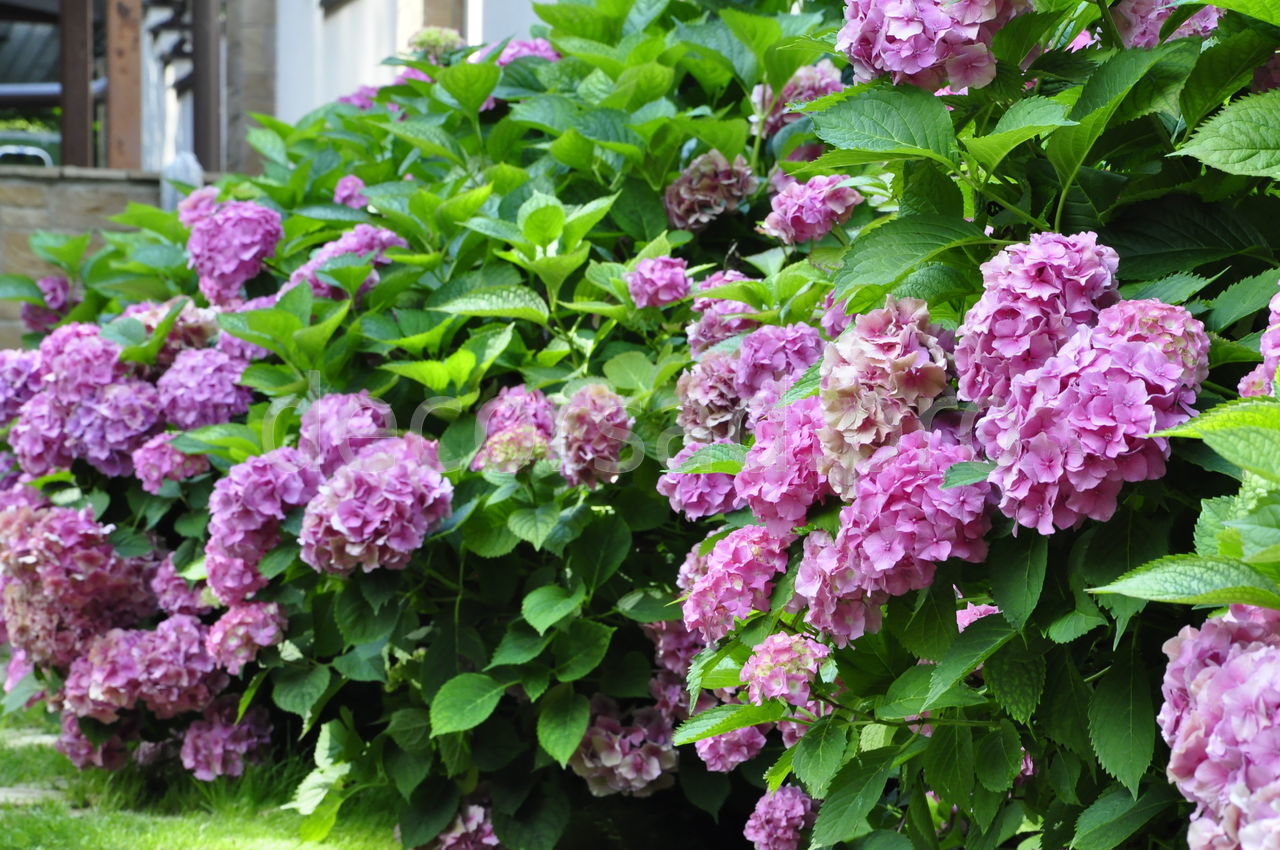
Autumn in the region is long and rather rainy, September is usually warm. The growing season ends, this is the period from mid-September to the first decade of October. It was at this time that the flowering bushes were preparing for winter holidays. The good thing is that before winter sleep, it is saturated with moisture from the rains. Such a plant wins better.
Important! It must be remembered that before the last shelter the earth must be dry. Therefore, if rain is expected during this period, then the bush should be covered with a film.
In order to understand how to hide hydrangea for the winter in the suburbs, you can watch a special video:
Preparing the plant for winter
Before the end of the growing season, that is, growth, development, stop watering and fertilizing fertilizers, so that the bush prepares for wintering. After the plant almost fades, they gradually begin to cut leaves from the branches. Do it sequentially, first lower, then all the rest.
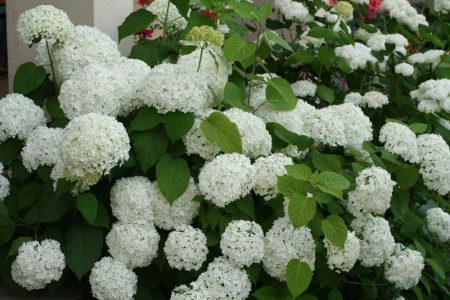 Note. The last two leaves that hug the bud of inflorescence do not cut. Regarding whether to remove old inflorescences, gardeners' opinions differ. Some leave them, others offer to cut. But in such a way that the cut was higher than the flowering bud (about a centimeter).
Note. The last two leaves that hug the bud of inflorescence do not cut. Regarding whether to remove old inflorescences, gardeners' opinions differ. Some leave them, others offer to cut. But in such a way that the cut was higher than the flowering bud (about a centimeter).
Thinning bushes. Small, non-woody shoots, obsolete, are removed. If many sprouts formed in the middle of the bush, then it is thinned out.
Uncut plants bloom in late spring in June, the inflorescences of this case are slightly less. Cut bushes in autumn to 5, 6 buds will bloom in late summer, will be with larger caps of flowers.
Leaves and ragged foliage are scooped up, the soil around the root is loosened. Also don't forget shelter grapes for the winter.
Shelter Methods
As already noted, the method of shelter depends on the type of hydrangea.The most spectacular large-leaved hydrangeas all need shelter.
Paniculate does not need strong wrapping, as the old bush winters well in the conditions of the region. For them, it is enough to sprinkle the root with several buckets of dry earth. But young, recently planted need to be harbored.
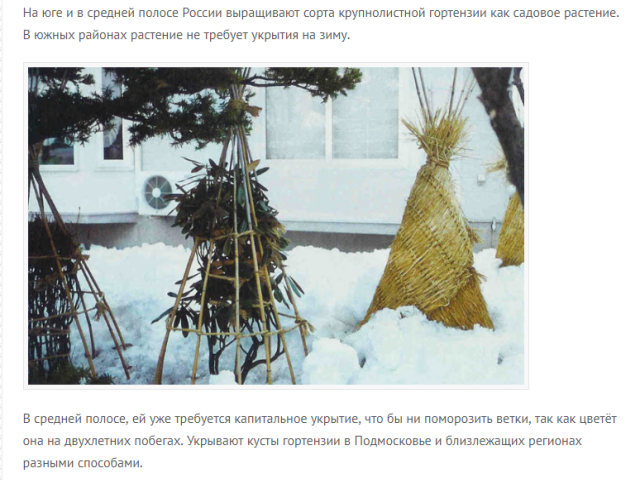
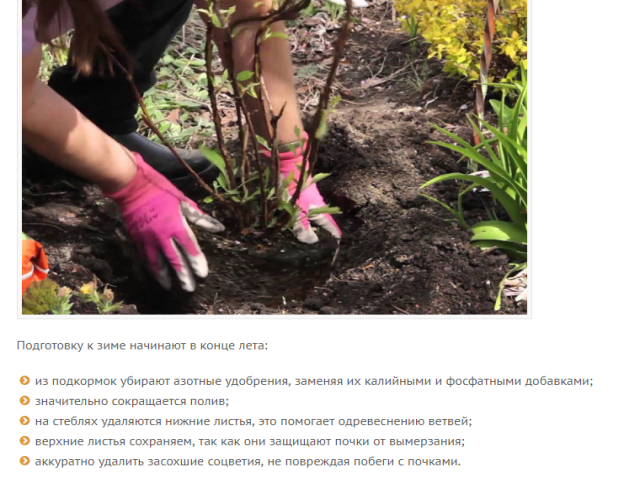
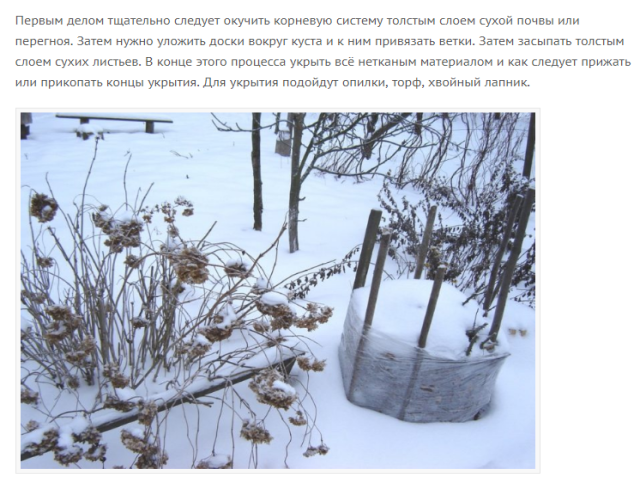
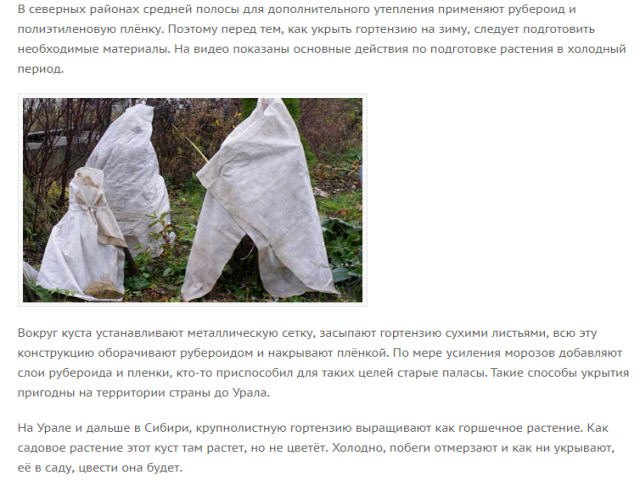
Method 1
Passes in two stages:
After the leaves are cut from the branches, twigs of several pieces are tied. Then with the help of hooks, staples, arches bend them to the ground. They are laid out in a circle. The middle of the bush is covered with earth and sprinkled with dry foliage. Before the first frosts, they cover with agrospan in several layers. You can use any garden non-woven material. The branches of the bush will gradually become accustomed to this situation.
After the first mild frosts, the insulation is removed. On bent branches they put lapnik, boards, plastic boxes with holes so that they touch the ground as little as possible. Top with dry foliage and laid with spruce branches. You can make two layers of insulation. After that, they cover with a non-woven insulation and cover with a film. The ends of the covering material are fixed with something heavy.
Method 2
We will tell you how to cover hydrangea for the winter in the suburbs, when the bush bends poorly. In this case, it can be left in an upright position. But this method is also suitable for sheltering a plant bent to the ground.
Preparation for shelter is similar. The branches are gathered together, they are tied not too tight with a rope, thick twine. Before this, the root part is also sprinkled with dry earth. A frame is being constructed along the perimeter of the bush. Depending on the size, heights, different devices are used for these purposes.
It could be:
- building metal mesh;
- arc of reinforcing wire;
- shields woven of twigs;
- shields from battens, etc.
Then dry foliage, wood chips are poured into this frame. On top of the frame is wrapped with covering material. Additionally, you can wrap the upper part with polyethylene.
[sc name = "info-dashed" text = "It is not advisable to completely wrap it in film, since a plant in such a winter shelter can suffocate, and the foliage starts to chatter."]
What needs to be considered when covering hydrangea?
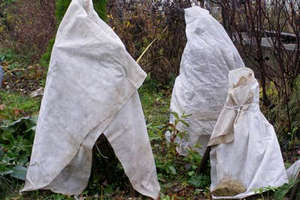 It is necessary to choose the best method that suits this particular type of bushes.
It is necessary to choose the best method that suits this particular type of bushes.
Try to build shelter so that the bush breathes. Dense wrapping and too tightly bound plants can spawn.
Choose the optimal time for the work. The first part of the shelter can be done when the first frosts began, the second during the onset of steady colds.
Do not rush to reveal hydrangea, when there is still the threat of spring frost. Better to carry out the disclosure gradually. First, remove the insulation and film, and when a stable positive temperature is established, clear of branches and foliage. The flower is sensitive to frost in the spring, even if it has wintered well enough.
Advice! If the site has a stationary heated greenhouse, then seasonal planting will be the best way. Some gardeners for this purpose use special capacious containers. This method is especially suitable for a thermophilic large-leaved species.
For regions of the Moscow Region panicle and tree-like varieties can be insulated for the winter not very much, since they tolerate frosts down to -35 degrees. According to observations, it is enough to thin out and sprinkle the root area with several buckets of dry earth. While large-leaved varieties require capital shelter. They take root long enough and grow slowly. But the beauty of their flowering compensates for the labor spent caring for them.
Another species that is becoming popular especially in landscape design is the petiolate climbing hydrangea.She takes root long enough, but after three years begins to grow violently. She comes from the Far East. This plant will be able to transform the facade of your home. But she also needs warming, especially when taking root, the first years. To cover hydrangea of this variety for the winter in the suburbs you can spruce spruce.
Remember, on how hydrangea overwinters, its flowering depends.

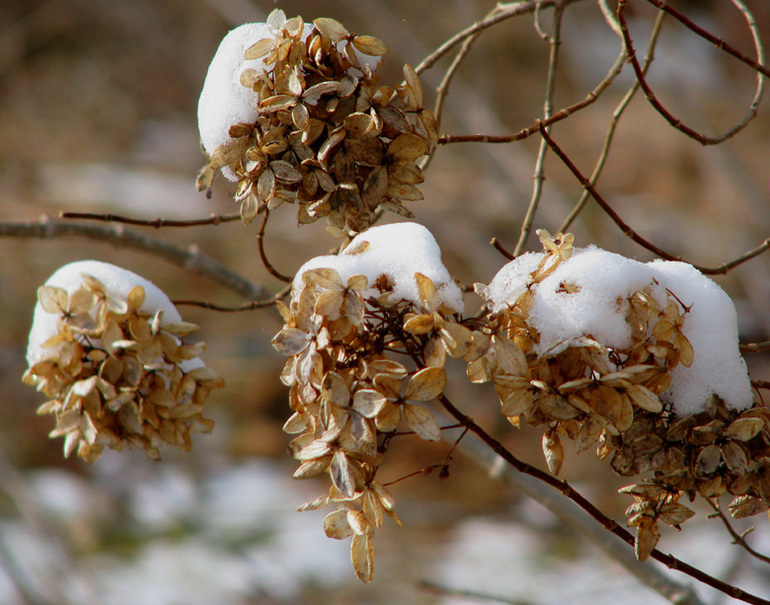
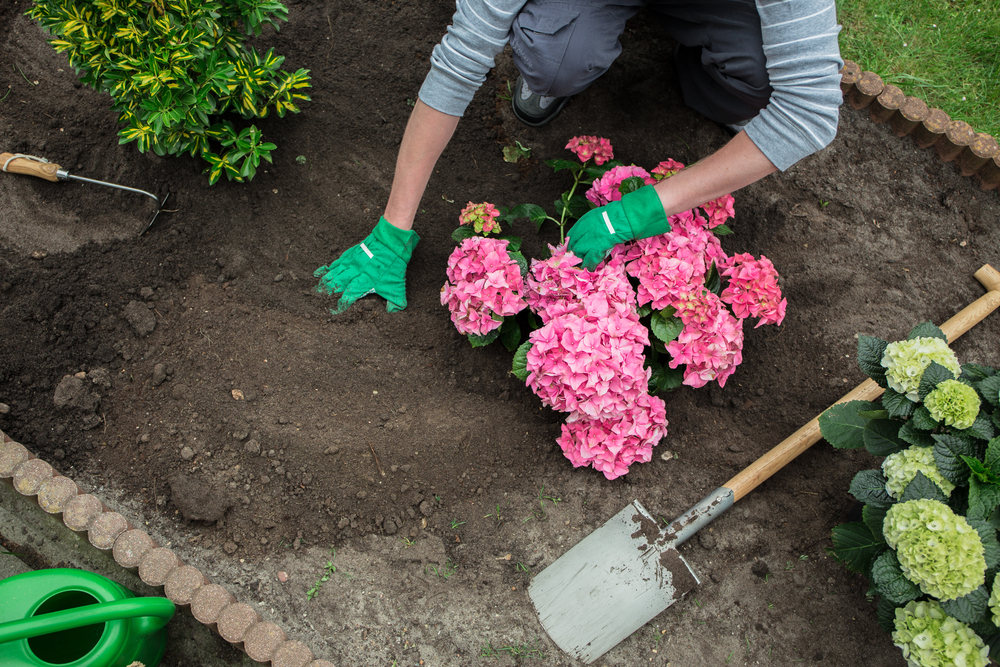

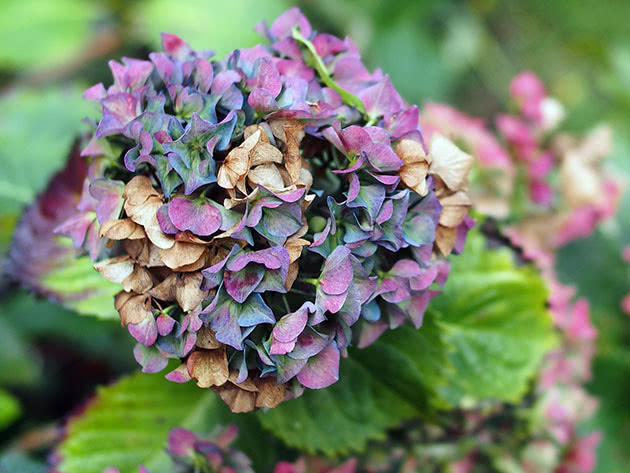 How to propagate hydrangea in the fall: methods, cuttings
How to propagate hydrangea in the fall: methods, cuttings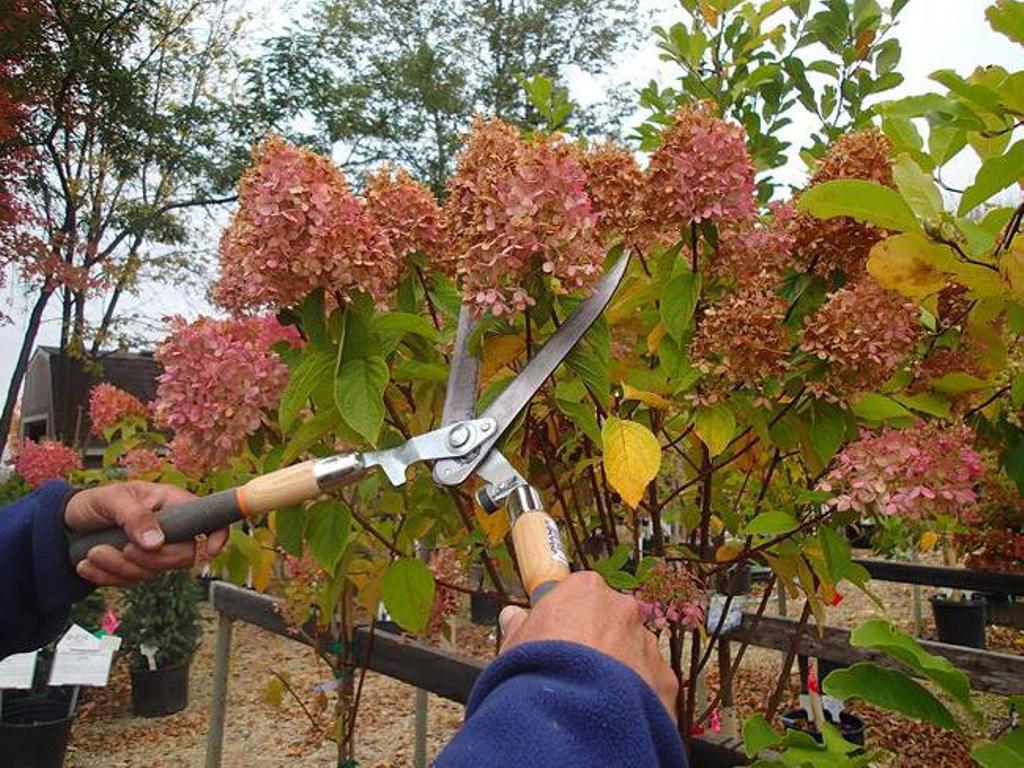 Hydrangea care in the fall and winter preparations
Hydrangea care in the fall and winter preparations How to feed hydrangea for lush flowering
How to feed hydrangea for lush flowering How to hide hydrangea in Siberia for wintering
How to hide hydrangea in Siberia for wintering